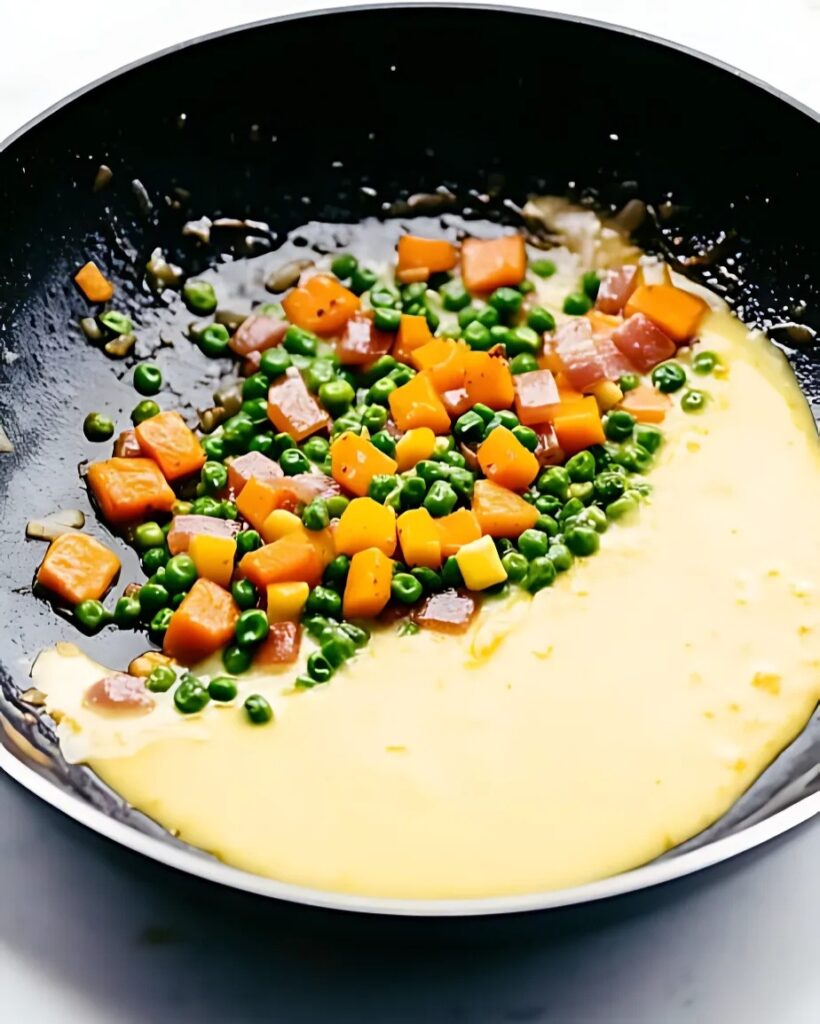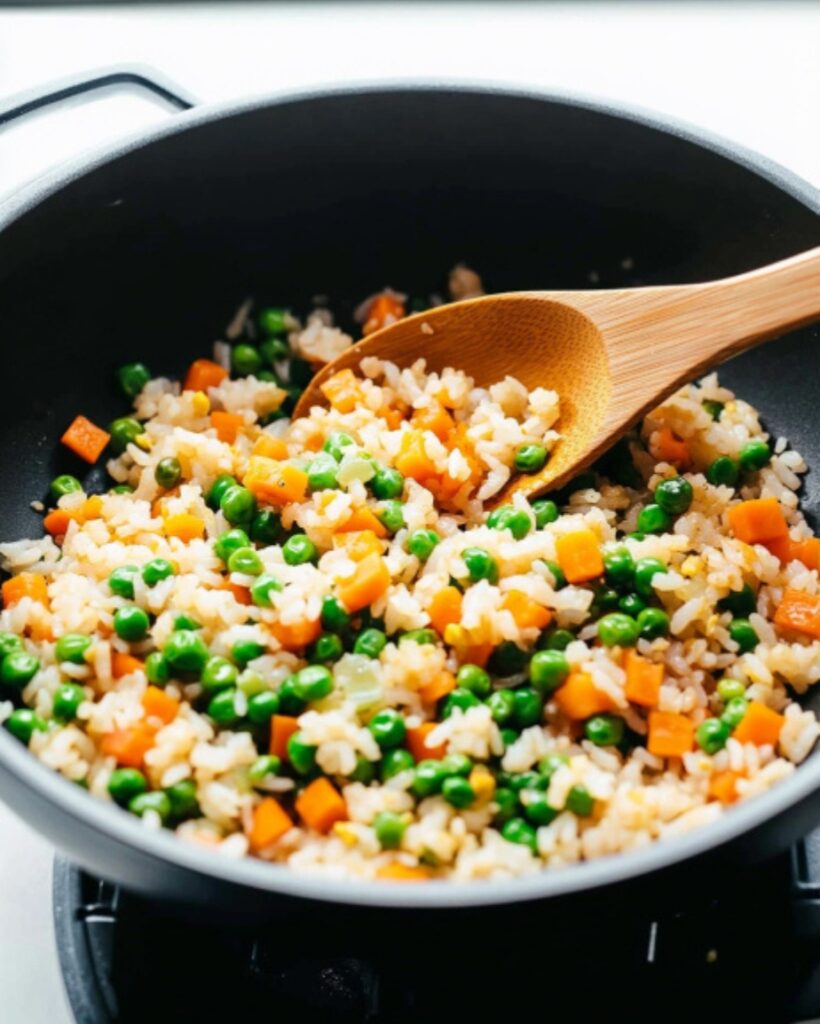The smell of fried rice takes me back to my grandmother’s kitchen. It was a place where magic happened with simple ingredients. Every time she made her secret fried rice, the whole family would come. They were drawn by the amazing smell of perfectly seasoned rice.
Making perfect fried rice is more than just mixing ingredients. It’s an art that needs precision, skill, and knowing how to balance flavors. You might wonder what makes a simple rice dish turn into a culinary masterpiece that delights your taste buds.
In this guide, we’ll explore the secrets of making fried rice like a restaurant. You’ll learn how to choose the right rice and control the heat. These techniques will turn simple ingredients into a fantastic meal.
Key Takeaways
- Understanding rice selection is crucial for texture
- High heat and proper wok technique matter significantly
- Day-old rice produces better results than fresh rice
- Timing and ingredient order are critical
- Mastering temperature control ensures perfect fried rice
The Essential Components of Perfect Fried Rice
Making the best fried rice is more than just mixing ingredients. Knowing the key elements can turn your cooking into a dish that wows your taste buds.
Selecting the Best Rice for Fried Rice
Choosing the right rice is key for the perfect texture. Day-old rice is best because it’s drier and won’t get mushy. Long-grain white rice is the top pick for those mastering wok cooking.
- Use jasmine or long-grain white rice
- Prepare rice at least one day in advance
- Spread rice on a flat surface to cool completely

Mastering Wok Cooking Techniques
High heat is a chef’s secret. Your wok should be very hot before adding ingredients. This makes each grain crispy on the outside and tender inside.
- Preheat your wok until it’s extremely hot
- Use a high smoke point oil like peanut or vegetable oil
- Stir ingredients quickly to prevent burning
Perfect Ingredient Timing
The order of adding ingredients is crucial. Start with proteins, then vegetables, and finish with rice and seasonings. Timing is everything for a perfect blend of flavors.
Professional chefs know that precision matters more than perfection in fried rice preparation.
What Is the Secret Ingredient in Fried Rice?
Unlocking the secret of great fried rice is more than just basic ingredients. Professional chefs use hidden ingredients to turn a simple dish into a masterpiece. The key? Umami-rich flavor enhancers that boost the flavor.
Some unexpected ingredients can make a big difference in your fried rice:
- Day-old rice with a slightly dry texture
- Fish sauce or oyster sauce
- Rendered chicken fat (schmaltz)
- Toasted sesame oil
Professional chefs know that layering flavors is crucial. A bit of high-quality soy sauce or a sprinkle of MSG can add depth. These small additions bring out complex flavors, making your fried rice unforgettable.

Each region has its own secret ingredients. In Southeast Asia, fermented shrimp paste adds a strong umami taste. Japanese chefs might use mirin, while Chinese restaurants focus on special wok techniques and precise seasoning.
The magic of great fried rice lies not just in ingredients, but in understanding how they interact and complement each other.
Try these hidden ingredients to find your own flavor. Your taste buds will love the journey.
Common Mistakes That Affect Fried Rice Texture
Making perfect fried rice is more than just mixing ingredients. Many home cooks unknowingly ruin their dish with key mistakes. These errors greatly affect the texture and taste.
Fried rice texture problems often come from basic cooking mistakes. These mistakes can turn a tasty meal into a letdown. Knowing these common errors is key to getting restaurant-quality results.
Fresh Rice: A Textural Nightmare
One big mistake is using freshly cooked rice. Day-old rice is a must for fried rice. Fresh rice has too much moisture, causing:
- Sticky, clumpy texture
- Mushy grain consistency
- Lack of distinct grain separation
Experts say to chill rice overnight. This helps the excess moisture evaporate. This way, the grains separate well and crisp up nicely in the wok.
Wok Overcrowding Challenges
Another big error is overcrowding the wok. Too many ingredients in the wok lead to:
- Steaming instead of frying
- Reduced heat efficiency
- Soggy, underwhelming results
Oil Temperature Management
Getting the oil temperature right is crucial. Wrong heat can make fried rice greasy. You want high, steady heat to quickly sear ingredients. This keeps their flavors and textures intact.
“The difference between good and great fried rice is often just a matter of temperature and technique.” – Professional Chef
Professional Chef Tips for Restaurant-Style Results
To make your fried rice taste like it’s from a restaurant, you need to know some chef secrets. Making restaurant-quality fried rice at home is all about using the right techniques and ingredients.
Here are some tips from professional chefs:
- Use cold, day-old rice to prevent clumping and achieve perfect texture
- Select high-quality oils like peanut or sesame for authentic flavor
- Implement the mise en place technique – prepare all ingredients before cooking
Seasoning is key to making your fried rice taste like a restaurant’s. Chefs suggest trying out umami-rich sauces and aromatics for deep flavors. Adding garlic, ginger, and green onions can make your dish stand out.
The trick to professional results is cooking at high heat and stir-frying quickly. Keep your wok or skillet hot and stir ingredients fast to avoid burning. This method creates a delicious caramelized taste.
Professional chefs believe that great fried rice is an art of balance and technique.
Variations and Customizations of Fried Rice
Fried rice is a blank canvas for creativity. You can turn a simple dish into a meal that shows off your taste and dietary needs. It’s a fun way to use up leftovers or try new flavors.

Different places around the world add their own twist to fried rice. You can find regional inspirations that make it taste unique:
- Thai-style fried rice with fresh basil and chili
- Japanese Hibachi-inspired versions with special seasonings
- Indonesian fried rice with sweet soy sauce
There are also ways to make fried rice fit your diet. You can swap out ingredients and proteins:
- Vegetarian options with tofu or tempeh
- Vegan versions with plant-based proteins
- Gluten-free alternatives using tamari instead of soy sauce
Customizing fried rice means adding your favorite ingredients. Use seasonal veggies, leftover meats, or spices. The goal is to keep the flavors balanced while trying new things.
Conclusion
Mastering fried rice takes patience, practice, and knowing key cooking tips. You’ve learned how to turn simple rice into a special dish. The key is using day-old rice, high heat, and the right wok techniques to get amazing results.
Perfecting fried rice means avoiding mistakes like using fresh rice or too much food at once. Choose quality ingredients, control the oil temperature, and follow chef advice. This will improve your cooking skills and make your dish taste better.
Fried rice lets you be creative. You can try traditional Chinese, Japanese hibachi, or your own mix with favorite ingredients. Use your new skills to make a dish that shows off your taste and cooking style.
Cooking is like art. Learning, trying new things, and practicing will make you a fried rice expert. Enjoy the learning, and relish every bite of your homemade dish.
FAQ
What makes day-old rice better for fried rice?
Day-old rice has less moisture. This makes the grains crisp up better when cooked. Fresh rice is too wet and can turn mushy, ruining the crispy texture of fried rice.
Can I use brown rice instead of white rice?
Yes, brown rice works too. But it’s firmer and takes longer to cook. Make sure it’s cooled and dried well before stir-frying for the best taste.
What is the ideal oil temperature for making fried rice?
Heat the oil to 350-375°F (175-190°C). This high heat cooks the rice quickly. It makes the rice crispy without being greasy or soggy.
How can I prevent my fried rice from becoming sticky?
Use cold, day-old rice to avoid stickiness. Don’t add too much moisture. Cook at high heat and stir-fry quickly to keep ingredients moving.
What are some protein options for fried rice?
You can use chicken, shrimp, beef, tofu, or eggs. Each adds a unique flavor. Choose based on what you like or what you have on hand.
Is fried rice considered a healthy dish?
Fried rice can be healthy if made right. Use lean proteins, lots of veggies, and moderate oil. Brown rice and more veggies make it even better.
What is the secret ingredient that makes restaurant fried rice taste different?
Chefs often add oyster sauce or sesame oil for depth. A little goes a long way in enhancing the flavor.
Can I make vegetarian or vegan fried rice?
Yes! Use tofu, tempeh, or more veggies instead of meat. Swap animal-based seasonings for vegetable broth. Add edamame or chickpeas for extra nutrition.
How long can I store leftover fried rice?
Keep it in an airtight container in the fridge for 3-4 days. Reheat to 165°F to stay safe.
What type of wok is best for making fried rice?
A carbon steel wok is top for fried rice. It heats up fast and adds the wok hei flavor. But a heavy-bottomed skillet works well at home too.

